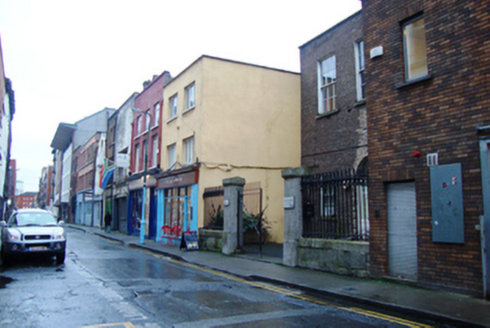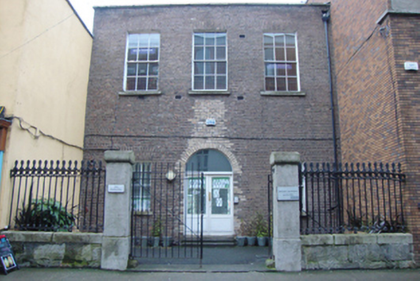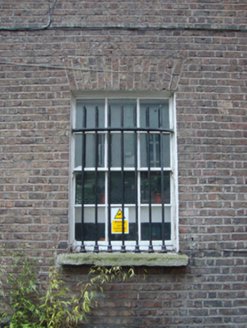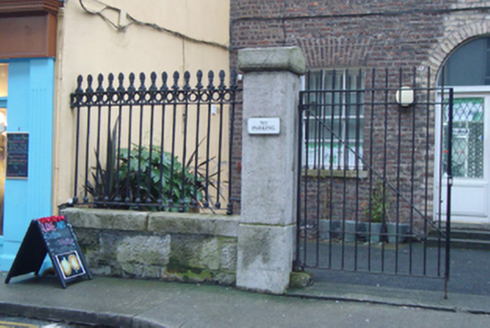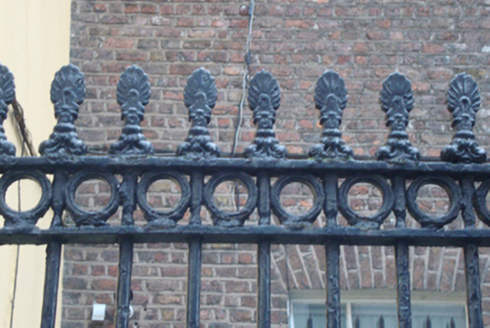Survey Data
Reg No
50011198
Rating
Regional
Categories of Special Interest
Architectural, Artistic
Original Use
House
In Use As
Shop/retail outlet
Date
1740 - 1760
Coordinates
315431, 234284
Date Recorded
08/12/2011
Date Updated
--/--/--
Description
Attached three-bay two-storey house over concealed basement, built, c.1750, set back from street with own courtyard. Now in use as retail unit and offices. Hipped slate roof hidden behind brown brick parapet wall, having cast-iron hopper and downpipe to west end of north elevation and granite coping to parapet. Brown brick walls to north elevation laid in Flemish bond, having replacement yellow brick to door surround and below central first floor window. Cast-iron vent plates at first floor level. Gauged brick square-headed window openings to first and ground floors having original six-over-six pane timber sliding sash windows, painted patent render reveals, and exposed granite sills. Round-headed door opening to ground floor, having gauged brick voussoirs, plain fanlight and replacement double-leaf door. Two paved steps to door from tarmacadamed enclosed courtyard. Limestone slabs around grated basement area to east side of front elevation. Decorative cast-iron railings on granite plinth wall with granite coping, having granite gate piers with replacement painted metal gates.
Appraisal
No. 2 Strand Street Great is a significant architectural survival on the street, where twentieth-century buildings dominate the eighteenth and nineteenth-century heritage. The granite wall and railings to surrounding the shallow courtyard are an unusual and eye-catching feature in this urban area, and it is likely that this may have originally been a mews building to no. 3 Ormond Quay Lower. The retention of timber sash windows adds an additional element of interest. Great Strand Street formed part of the Jervis Estate formed by Humphrey Jervis, Lord Mayor of Dublin in 1681-3, who laid out the area around Saint Mary’s Abbey after buying much of this estate in 1674.
